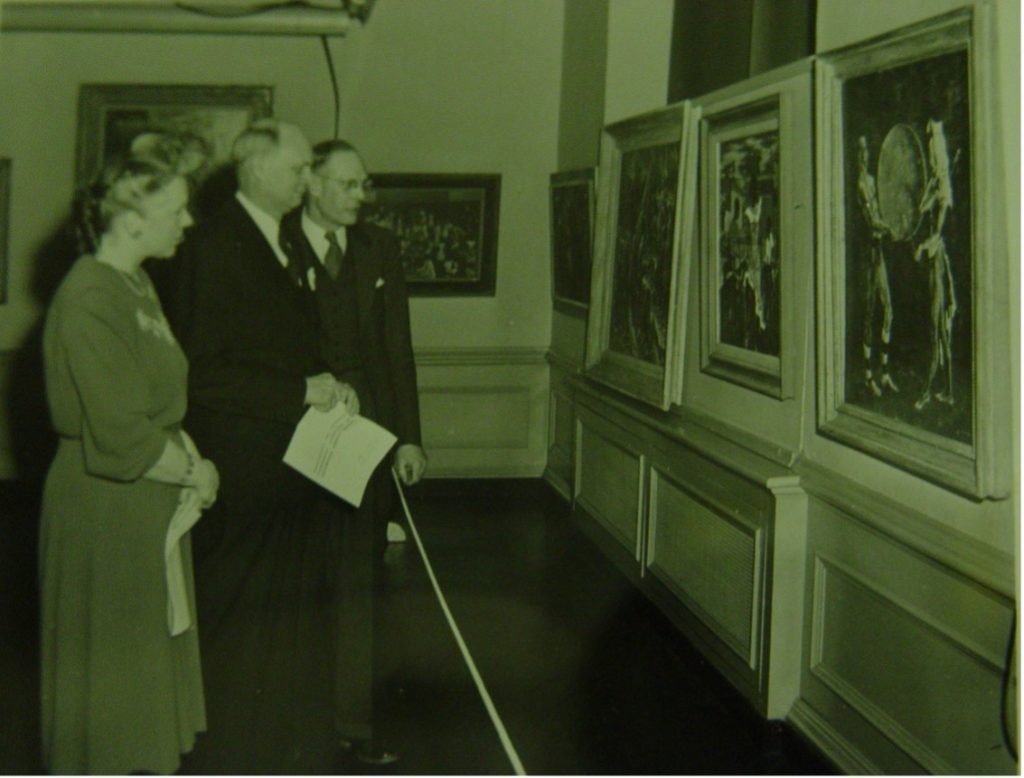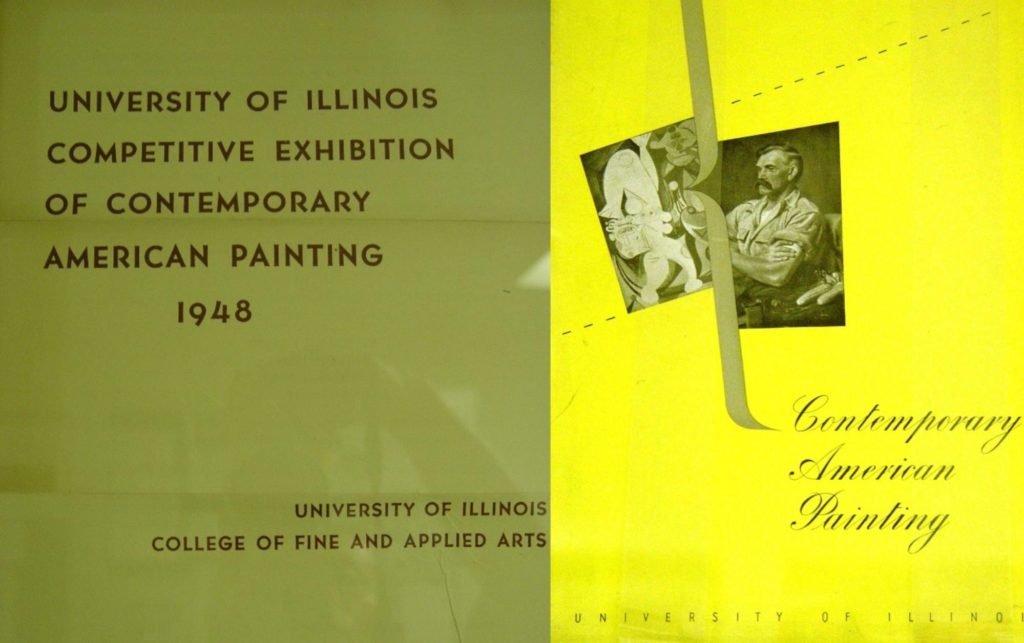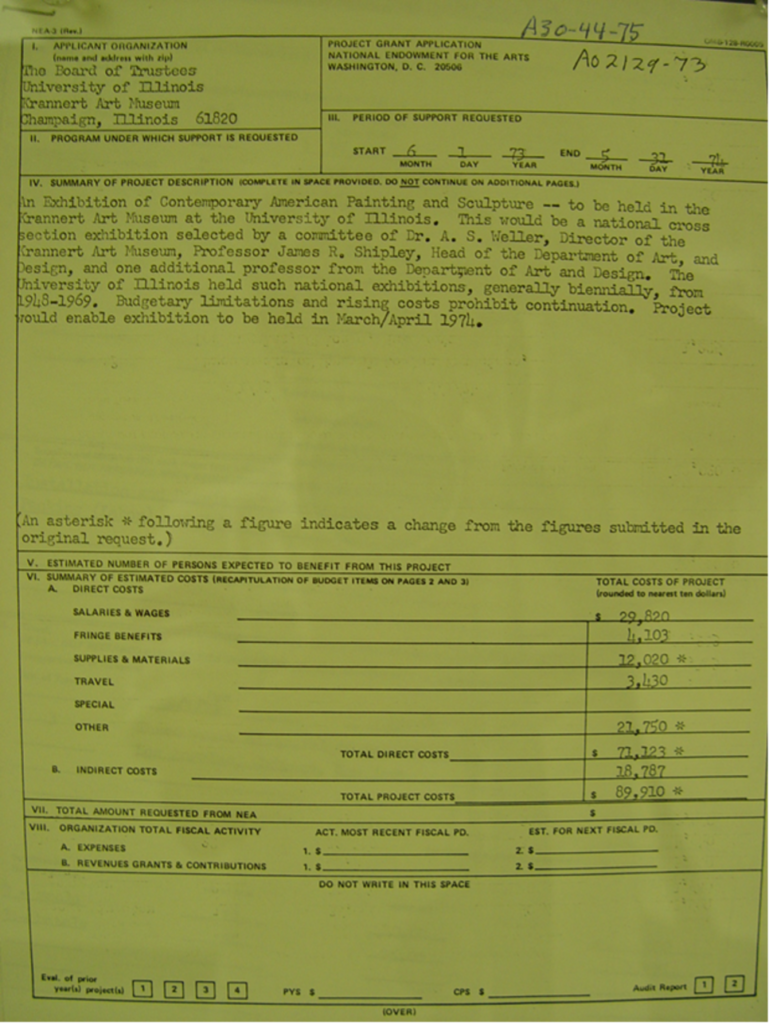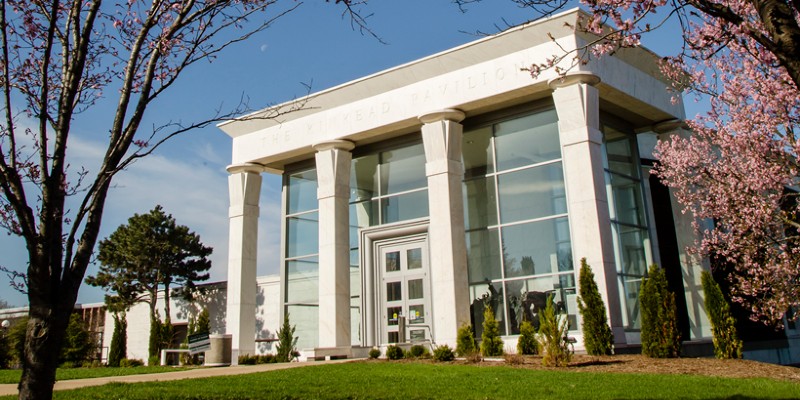Currently at Krannert Art Museum there is a most interesting and unique exhibition on contemporary American arts since 1948 on display. As the curator of Art Since 1948 Amy L. Powell pointed out:
“Drawn from the KAM permanent collection, along with strategic loans, this gallery showcases more than 50 objects made from 1948 to the present. The space is organized by themes and a loose chronology beginning with works collected from the university’s first Contemporary American Painting exhibition in 1948. Each theme highlights artistic methods and the ways artists have staked positions on aesthetic and social concerns, which are often one and the same.”
Recently, I gave a gallery guild tour of this exhibition to two international visiting scholars to the University of Illinois: Associate Professor Qiong Liu, School of Journalism and Communication, Central China Normal University, and Professor Wei Wang, Dean of New Media Department, College of Advertising, Communication University of China. Though neither of them is a scholar in art in general nor in American contemporary art in particular, they enormously enjoyed viewing the exhibition and were completely astonished to hear me telling them the history of how U of I organized the fifteen Festivals of Contemporary American Arts between 1948 and 1974. I sincerely hope this piece of U of I art history will give people some insights into this important and profound exhibition Art Since 1948, currently on display at Krannert Art Museum.
According to then U of I art Professor Frank Roos’ statement on the first Contemporary American Painting exhibition written on February 25, 1948:
“We should, especially in a university, give all honest expressions of desire for change a hearing, in are as in other fields. Progress can only be achieved through change and evolution. Controversy is inherent in the idea of change. This exhibition should give rise to some healthy controversy. A sound evaluation of the present state of art can only be achieved through an objective study of the varying contemporary trends.
Perhaps the most important fact for the observer to remember is that the paintings which he finds strange are necessarily present because they represent a significant number of other paintings of a similar type being produced today. Any comment on the content of this exhibition should be directed, not at the jury, but at our society. The artists as represented here are essentially mirroring, in their works, the forces which influence them as individuals. “
As people recall: “Art Professors Frank Roos and Allen Weller, and Dean Rexford Newcomb excitedly led the planning and managing of the 1948 exhibition with the support of President George Stoddard. “
The first show in 1948 was primarily one of American painting. A traveling three-man jury roamed the country in search of artworks for the event. This was also the only show to include an uninvited competitive section: 953 entries deluged the judges at Champaign-Urbana and 73 were accepted for exhibition. With Krannert Art Museum not yet built, those pieces were hung for display in the hall of Casts and in the Architecture Building.



Professors Frank Roos and Allen Weller explain their inaugural hopes for the festival in the introduction to the 1948 catalog:
“The purposes of this exhibition are to bring together a group of pictures which represent all the important types of contemporary American painting; to bring to a large University community somewhat removed from the great collections in the metropolitan centers a representative contemporary collection of fine quality… We should, especially in a university, give all honest expression of desire for change a hearing, in arts as in other fields… Controversy is inherent in the idea of change. This exhibition should rise to much healthy controversy.”
On September 29, 1970 the Dean of College of Fine and Applied Arts Professor Allen Weller wrote to Chancellor Peltason and Vice Chancellor Carter announcing that the 1971 Exhibition would be cancelled:
“The main reason for the cancellation is the fantastic situation so far as insurance is concerned. All insurance companies approached by Mr. Gallivan refused to have anything to do with insuring works of art going to a university campus. The only possibility was an offer which would have increased insurance premiums by some 350% with an unacceptable deductible.”
Indeed, I was able to locate an original financial request to U of I Board of Trustees for the last Festival to be held in 1974 which showed, apart from the insurance premium, a total cost of $89,910!
Remember, at that time the Festival had been financed by a recurring Special Arts Project item of $20,000 in the college budget. Therefore, unfortunately the Contemporary American Art painting and sculpture exhibition/festival could no longer be afforded.

However, on the other hand, in conducting a total of 15 festivals, U of I College of Fine and Applied Arts had the opportunity of collecting an important and significant body of contemporary American arts during that time to add to U of I’s permanent art collections. Some of the artwork artists sold to U of I at that time just for a fraction price of what they worth now because at that time those artists were regarded as so called emerging artists. For example, a piece of Mark Rothko’s Color Field painting nowadays has a price tag of multi millions of dollars but in the 1960s and 1970s you may get it for a few hundred dollars!

Besides, as a university museum curator for more than 30 years, I understand that these art exhibitions benefited our university’s academic interests, promoted the participating/exhibiting artists and brought the enjoyments to our local communities and improved our community and personal quality of life!
So, if you have not seen this art exhibition at Krannert Art Museum, you should not miss it. If you have seen it, you should go back to revisit it the artwork on display changes from time-to-time. I personally noticed a couple of weeks ago KAM had just made some rotations of artworks in this exhibition.
Quotes were taken from an exhibition held on September 19, 2010 at the University of Illinois Archives.








